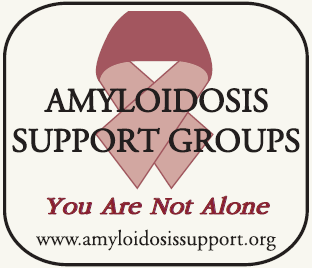Trusted Resources: Education
Scientific literature and patient education texts
Emerging Therapeutics for the Treatment of Light Chain and Transthyretin Amyloidosis
source: JACC. Basic to Translational Science
year: 2019
authors: Zhang KW, Stockerl-Goldstein KE, Lenihan DJ
summary/abstract:Cardiac amyloidosis is a restrictive cardiomyopathy that results from the deposition of misfolded light chain or transthyretin proteins, most commonly, in cardiac tissue. Traditionally, treatment options for light chain (AL) and transthyretin (ATTR) amyloidosis have been limited. However, there are now multiple novel therapeutics in development and several therapeutics recently approved that promise to revolutionize clinical management of AL and ATTR. Most of these agents disrupt specific stages of amyloidogenesis such as light chain or transthyretin protein production, formation of amyloidogenic intermediates, or amyloid fibril aggregation. Others aim to remove existing amyloid tissue deposits using monoclonal antibody technology. Although these advances represent an important step forward in the care of cardiac amyloidosis patients, additional studies are needed to define the optimal treatment paradigms for AL and ATTR and to validate clinical, imaging, or serum biomarker strategies that may confirm a cardiac response to therapy.
organization: Washington University in St. Louis School of Medicine, USADOI: 10.1016/j.jacbts.2019.02.002
read more full text
Related Content
-
Transthyretin Cardiac Amyloidosis: An Under-Diagnosed Cause of Heart FailureIntroduction: Cardiac amyloidosis is th...
-
Molecules That Curb Errant Proteins of AL Amyloidosis Point to New Type of TherapyScientists at Scripps Research have iden...
-
Novel Approaches for the Management of AL AmyloidosisPurpose of Review: Light-chain-associat...
-
Peripheral Neuropathy Symptoms, Diagnostic Tests, and Approved Treatments – ASG Webinar 7/11https://www.youtube.com/watch?v=K2TmwAfu...
-
CRISPR Gene Editing Reduces Disease-Causing Protein in Hereditary Transthyretin AmyloidosisThe results of the phase 1 study open-la...
-
Dylan’s Amyloidosis Storyhttps://www.youtube.com/watch?v=G3Ec14rA...
-
Q&A Session 2 – ASG Webinar 13/13https://www.youtube.com/watch?v=NrEjyVeJ...
To improve your experience on this site, we use cookies. This includes cookies essential for the basic functioning of our website, cookies for analytics purposes, and cookies enabling us to personalize site content. By clicking on 'Accept' or any content on this site, you agree that cookies can be placed. You may adjust your browser's cookie settings to suit your preferences.
More information
The cookie settings on this website are set to "allow cookies" to give you the best browsing experience possible. If you continue to use this website without changing your cookie settings or you click "Accept" below then you are consenting to this.
To improve your experience on this site, we use cookies. This includes cookies essential for the basic functioning of our website, cookies for analytics purposes, and cookies enabling us to personalize site content. By clicking on 'Accept' or any content on this site, you agree that cookies can be placed. You may adjust your browser's cookie settings to suit your preferences.
More information
The cookie settings on this website are set to "allow cookies" to give you the best browsing experience possible. If you continue to use this website without changing your cookie settings or you click "Accept" below then you are consenting to this.



 myBinder
myBinder




